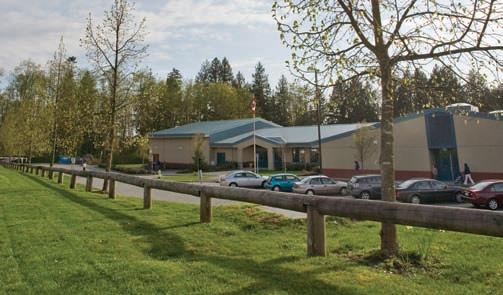SPOA_Spr_2010:SPOA_Template.qxd
5/5/2010
5:11 PM
Page 56
The latest in air filtration for schools BY BOB JACKSON, PRESIDENT, NORSPEC FILTRATION LTD., NAFA CERTIFIED AIR FILTER SPECIALIST
In Canada, 5.7 million school children and close to one million teachers, administrators and others walk into 15,000 school buildings every day—and at least 50 per cent of these schools have been diagnosed with indoor air quality problems. Indoor air quality problems can be caused by a wide range of factors including indoor sources of contaminants such as building materials, furnishings, cleaning agents, printing and copying devices, combustion appliances, allergens, fungi, moulds, bacteria, viruses, radon, and lead. Tighter buildings combined with reduced ventilation can also reduce IAQ and affect the health and well-being of school occupants. In addition to contributing to health problems, poor air quality can be costly for schools due to the potential for expensive investigation and hasty solu-
tions during a major indoor air problem; higher heating and cooling costs; damage to the physical building structure and mechanical equipment; and higher liability. Thus, the proper maintenance of indoor air is more than a "quality" issue; it encompasses safety and stewardship of the investment in students, staff and facilities. The promotion of good indoor air quality (IAQ) in schools is particularly important, since poor IAQ can potentially affect the health of students and staff, as well as the educational process and costs. Good IAQ contributes to a favourable learning environment for students, productivity for teachers and staff, and a sense of comfort, health, and wellbeing for all school occupants. These combine to assist a school in its core mission—educating children.
Air Filtration Specialists 56
Ops Talk • Spring 2010
PARTICULATE IN THE AIR In the past, many schools used lowefficiency (MERV 1-4) filters that removed minimal levels of all particulate matter. These filters did little at capturing the particulate matter that existed in the school air system. Schools represent a much denser population percentage than typical commercial buildings. Viable and non-viable particulates are brought in on people’s clothing and through open doors and windows — add to this the activity level of most young people, which increases the shedding of skin cells and other particulates, and this makes school air some of the dirtiest air in any environment. Recent developments from within the air filtration industry are helping schools address their indoor air quality issues. Air filter manufacturers now offer a full range of high-efficiency HVAC products
4704 - 91st Avenue Edmonton, AB T6B 2L1 Tel: 780-468-9296 Fax: 780-468-5806


















